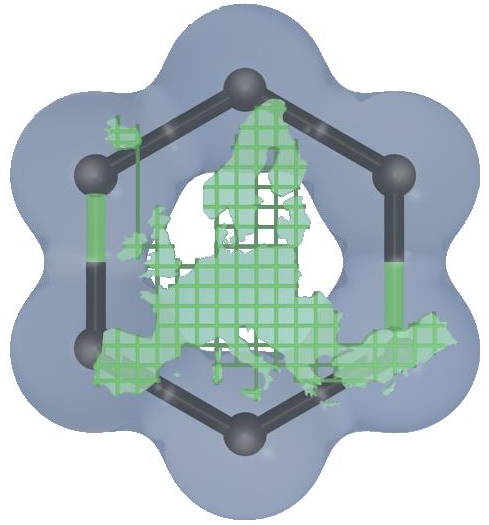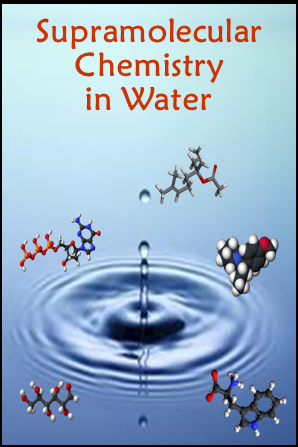 |
MPNS Action COST MP0702
Towards Functional Sub-Wavelength Photonic Structures
Start date: 2008 End date: 2012
The main objective of the Action is to establish active links between European laboratories working in the field of artificial materials for photonics applications, where the structural dimensions are at or below the wavelength of light. Fabrication of such structures has become possible due to the expertise delivered by nanotechnology, which opens the way to the study of new functional artificial materials and plasmonic structures, promising progress in miniaturisation - and which will allow exploration of new aspects of light-matter interaction. The goal is to increase knowledge about the basic mechanisms of the interaction of light with matter on a sub-wavelength scale. The scientific innovation concerns: the basic mechanisms of light-matter interaction in micro- and nanostructured materials - including metals (plasmonics), the trade-off between strong localization and propagation losses, photonic diagnostic instruments, and non-linear effects. The technological impact of the Action will lead to the implementation of advanced optical equipment and devices with high performance and low cost. The scientific transformation resulting from the Action will facilitate interconnection between topics that will produce new results in the field of photonics and pave the way to the forthcoming era of nanophotonics.
Bulgaria representative – Assoc. Prof. Dr. Ilijana Timcheva
|
 |
CMST Action COST CM0802
European Phosphorus Sciences Network (PhoSciNet)
Start date: 2008 End date: 2012
The European Phosphorus Sciences Network (PhoSciNet): A Knowledge Platform for Advanced Applications The objective of this COST Action is to provide a knowledge platform to advance applications in materials science, catalysis, and bioscience-related fields by embedding the advantageous properties of (organo)phosphorus components. Especially important classes of phosphorus-based compounds to be investigated are polymers, organometallic heterocycles, precursors for nanomaterials, chemically robust P-C cages, novel low-cost catalyst ligands, and designed (organo)phosphorus reagents. Within the Action, a European Sciences Network (PhoSciNet) will be established to bring together researchers from European countries, candidate countries, and transformation states for the exchange of knowledge and techniques in these modern, rapidly evolving fields in which building-block methodologies and structure-reactivity correlations are key components. This will be accomplished by annual European Phosphorus Workshops (EuroPhos), intensive exchanges of young researchers, and an internet platform for monitoring and streamlining of innovations in the phosphorus sciences. Industrial partners will be involved in PhoSciNet to ensure rapid and effective technology transfer. The network will facilitate Europe's continued global leadership in the increasingly fierce competition with Asian, American, and other non-European activities in the many new strategic areas related to phosphorus chemistry such as the developing of novel phosphorus-embedded materials, catalysts, and bioorganic compounds. Keywords: phosphorus science, materials science, asymmetric catalysis, nanomaterials, green chemistry.
Bulgaria representative – Assoc. Prof. Dr. Nikolay Vassilev
|
 |
CMST COST Action CM1002
COnvergent Distributed Environment for Computational Spectroscopy (CODECS)
Start date: 2010 End date: 2014
CODECS (COnvergent Distributed Environment for Computational Spectroscopy) is an interdisciplinary COST Action which aims at creating a network dedicated to computational spectroscopy, i.e. to the extraction of structural and dynamical features of molecular and supramolecular systems by in silico analysis of spectroscopic observables. The Action is organised in four Working Groups whose activities will cooperate to develop a modular, integrated computational tool for resonance, vibrational, and optical spectroscopies based on multiscale computational approaches in space and time, at quantum, semi-classical and classical levels of description of structural/dynamic molecular phenomena.
Bulgaria representative – Prof. DSc. Petko Ivanov
|
 |
CMST COST Action CM1005
Supramolecular Chemistry in Water
Start date: 2011 End date: 2015
The objective of this COST Action is to develop supramolecular systems that work in water. Such supramolecular systems should allow to (i) monitor environmentally or biologically relevant species in water (ii) control selectivity of reactions in water, and (iii) produce self-assembled organized structures in water which are stimuli responsive and which can be used for programming functions in materials and devices. The Action aims at improving our understanding of the multiple weak non-covalent, but collectively powerful interactions that allow efficient and selective recognition processes to occur in water.
Bulgaria representative – Prof. DSc. Svetlana Simova
|
